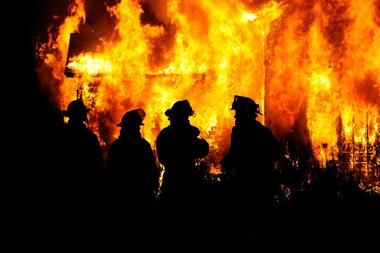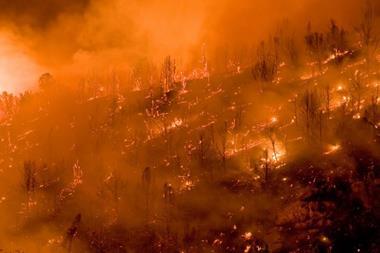Faced with rising flash flood risk, Camden Council is working with the City of London and Thames Water to deliver a joined-up flood management strategy in South End Green. From natural flood defences to drainage upgrades and borough-wide SuDS, the council is embedding resilience across its urban landscape.
Location: South End Green, London
Risk focus: Flash flooding, climate adaptation
Key stakeholders: Camden Council, City of London, Thames Water, Cadent Gas, local businesses and residents
The challenge: Escalating flash flood risk in urban hotspots
Flash flooding in London’s South End Green has become increasingly frequent in recent years, driven by climate change and periods of extreme rainfall. The area, located on the edge of Hampstead Heath, has become a flashpoint for surface water build-up, threatening homes, businesses and transport routes during heavy downpours.

As the designated Lead Local Flood Authority (LLFA) for the borough, Camden Council is responsible for managing surface water flood risk. This includes identifying priority areas, working with partner agencies, and delivering mitigation strategies. But Camden’s cabinet member for planning and a sustainable Camden, Councillor Adam Harrison, is clear that effective flood resilience cannot be delivered in isolation.
“In the past few years at locations across Camden, including South End Green, we have experienced more frequent instances of flash flooding, yet another reminder of the reality of the Climate Emergency,” says Harrison. “While we cannot prevent flooding from happening entirely, we will do everything we can to reduce it.”
What they did: Natural flood management meets drainage upgrades
Camden is working in partnership with the City of London Corporation, which manages Hampstead Heath, to reduce the flow of rainwater into flood-prone South End Green. A new natural flood management scheme is being installed to the south of the East Heath car park.
“The City of London, with our encouragement and support, is currently installing a natural flood management scheme to the south of the East Heath car park,” explains Harrison. “This work aims to stop rainwater from running off the Heath onto East Heath Road which in turn can cause flooding in South End Green.”
This is being achieved by diverting rainwater into an existing natural area on the edge of the Heath – helping to intercept and hold back surface water before it reaches the roads.
To complement this upstream work, Camden has delivered a series of drainage infrastructure upgrades in South End Green itself, including:
- Widening the openings in several identified existing gullies
- Introducing new gullies to maximise the use of an existing large-diameter Thames Water combined sewer in the area
But these works are part of a broader, borough-wide effort to embed resilience into the urban environment.
“In the two and a half years since publishing our Flood Risk Management Strategy, we have made good progress toward enhancing flood risk management in Camden,” says Harrison. “We have introduced Sustainable Drainage Systems (SuDS) at identified locations across the borough to help mitigate periods of heavy rainfall, while also de-paving streets, turning the grey to green, and continuing to increase the number of new trees and therefore the tree canopy throughout Camden.”
One notable example is an “innovative and award-winning SuDS on Parliament Hill,” installed alongside gas mains replacement by Cadent Gas to minimise disruption. Camden has also continued to press for the Thames Water sewer network to expand to handle more frequent large storm events.
Overcoming challenges: Coordinating across agencies and funding sources
Flood mitigation in Camden is inherently collaborative – requiring the council to work not only across internal departments, but with external stakeholders and local communities. Harrison stresses this point:
“Experience has shown how important it is to work across Councils, water companies, emergency services and with residents and businesses to deal with extreme weather events like these.”
The approach is supported by active monitoring. “We actively monitor all higher risk areas, and our gully crews inspect all drains to ensure they are free of leaves and debris,” Harrison says.
Next steps: Embedding resilience into the landscape
Looking ahead, further natural flood management work is planned across Hampstead Heath, including:
- Parliament Hill
- The fairground area above Hampstead No.1 Pond
“The Council has also recently approved an ordinary water course application by the City of London to introduce various natural flood risk management measures on the Heath that will further slow the rate at which water reaches the various ponds,” Harrison notes. Those ponds were previously reinforced through major dam improvement works completed in 2015–16.
These works feed into Camden’s long-term plan to embed resilience through nature-based solutions, green infrastructure, and strategic investment in high-risk locations.
Why it matters: Local action for city-wide resilience
Camden’s approach reflects a growing recognition that climate adaptation must happen at all scales – from city-wide strategies to neighbourhood-level drainage and landscaping projects. Its Flood Risk Management Strategy, published in 2022, places strong emphasis on de-paving streets, using SuDS to handle heavy rainfall, and working with infrastructure partners to scale up long-term solutions.
“These are just some of the measures we are progressing to reduce the risk of flooding in Camden,” says Harrison. “Camden is the designated Lead Local Flood Authority for the borough, however this does not mean we can achieve everything alone and we are working with partners to identify new opportunities and funding, as well as encouraging everyone to take action to reduce the risk of flooding.”
The work in South End Green also supports broader regional resilience objectives. London faces rising surface water flood risk, and Camden’s multi-layered programme – combining engineering, ecology and inter-agency cooperation – offers a strong example of local leadership in action.














No comments yet